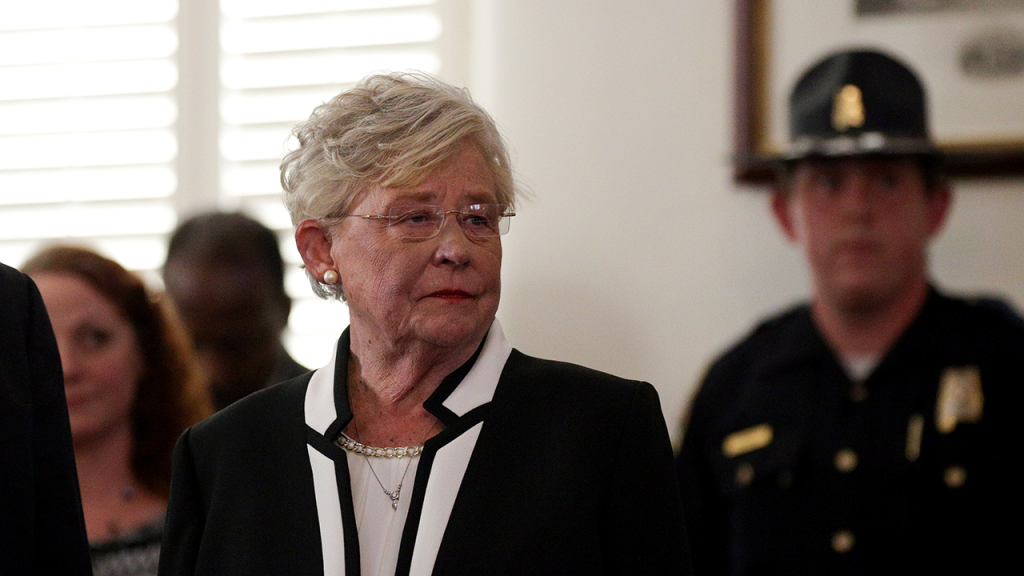Alabama’s Pioneering Collaboration with ICE: A New Approach to Immigration Enforcement
In a groundbreaking development in immigration enforcement, Alabama has established what appears to be one of the first formal “checkpoint” collaborations between state police and federal immigration authorities. Over the past several days, this partnership has resulted in more than two dozen detentions across the state. Governor Kay Ivey confirmed she specifically directed the Alabama Law Enforcement Agency (ALEA) and other state agencies to “work closely with ICE to catch criminal illegals.” The initiative represents a significant shift in how state and federal authorities coordinate on immigration matters, with Alabama potentially setting a precedent for other states considering similar approaches under the new presidential administration.
The collaboration has already yielded notable results, particularly in Russellville, where at least 20 individuals were detained in what Governor Ivey described as a particularly successful operation. ALEA confirmed that their troopers conducted drivers’ license checkpoints in Franklin and Colbert counties with ICE special agents present during these operations. This area has demographic significance, as more than one-third of residents identify as Hispanic—a proportion that significantly exceeds Alabama’s statewide Hispanic population of about 6%. This concentration has raised questions among immigration advocates about the targeting of these communities, while state officials maintain the checkpoints are standard law enforcement procedures now enhanced with federal immigration enforcement capabilities.
“Driver license checkpoints occur all over the state and are one of the ways we stop criminals in their tracks, and now, we include ICE agents in these efforts,” Governor Ivey explained, framing the initiative as an expansion of existing public safety measures rather than a new policy. The term-limited Republican governor emphasized that her administration is committed to using “every tool in the toolbox” to maintain public safety for Alabama residents and visitors. This stance reflects broader political currents in the state, where immigration enforcement has become a central policy focus. Senator Tommy Tuberville, who hopes to succeed Ivey as governor, enthusiastically endorsed the collaboration, stating, “When 77 million Americans voted for President Trump, they sent a clear message: they want mass deportations – and they want them now.” His comments suggest this approach aligns with national political trends and voter sentiment.
The state’s political leadership has presented a united front in support of the enhanced enforcement strategy. Alabama House Speaker Nathaniel Ledbetter praised the initiative while criticizing other states where, in his view, “politics matter more to [elected officials] than public safety.” Ledbetter expressed confidence that “this state and federal partnership will continue yielding positive results.” Beyond Russellville, ICE has conducted operations throughout Alabama during the summer, including two dozen arrests in Baldwin County—home to popular tourist destinations along the Gulf Coast. These operations took place in locations such as Loxley and Spanish Fort, expanding the geographic scope of the enforcement efforts beyond areas with large immigrant populations to include transportation corridors and other strategic locations.
The new approach has generated significant concern among immigration advocates and attorneys working in Alabama. Birmingham immigration attorney Brett Pouncey reported that numerous communities are experiencing license-checking “roadblocks” with ICE participation, based on accounts from his clients. Community organizer Evelyn Servin voiced concerns about potential racial profiling, suggesting that local police should not be collaborating with federal immigration authorities in this manner. The impact on immigrant communities appears to be profound—one immigration advocate in the Baldwin County region reportedly advised immigrants to write phone numbers on their bodies to ensure they could contact family members if detained, illustrating the level of fear these operations have generated among vulnerable populations.
This Alabama initiative emerges at a time of significant national debate about immigration enforcement priorities and methods. The state’s approach represents a substantive implementation of the more aggressive immigration enforcement promised during the recent presidential campaign. While supporters view it as a necessary public safety measure targeting “criminal illegals,” critics raise concerns about civil rights implications, community trust in law enforcement, and the potential for racial profiling. As Alabama continues to develop this model of state-federal collaboration on immigration enforcement, other Republican-led states may look to replicate its approach, potentially signaling a broader shift in how immigration laws are enforced across the country. The Department of Homeland Security has yet to provide comprehensive data or additional comment on this collaborative model, leaving questions about its potential nationwide application and long-term impacts on both immigration enforcement and community relations.














